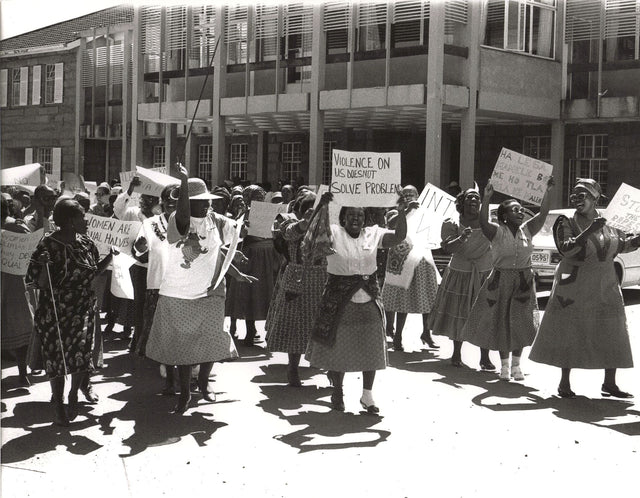A Brief History of National Women’s Day and the Fight for Equality in South Africa
August is Women’s Month in South Africa and, each year on August 9, Women’s Day is celebrated in recognition of the strength and resilience of women and their contribution to their society and country. It’s a national opportunity to pay tribute to generations of women whose struggles provided the groundwork and paved the way for the progress made in empowering women and achieving gender equality to date.
First marked in 1995, August 9 is also a public holiday that commemorates the march of 1956 when 20,000 women from all parts of South Africa – armed with a petition containing more than 100,000 signatures – headed to the Union Buildings in Pretoria in protest against laws requiring “black” South Africans to carry an internal passport under The Population Registration Act. Known as a dom pass, or “dumb pass”, the passport served to maintain population segregation, control urbanisation and manage migrant labour during the apartheid era.
The 1956 protest was organized by members of the Federation of South African Women (FSAW) and was widely supported by mothers, daughters, sisters and friends from all over who came together to initiate change. Not only did they march, they remained standing outside the Union Buildings in silence for 30 minutes in a non-violent and powerful display of unity. This was followed by the rendition of a protest song composed in honour of the occasion, “Wathint’ Abafazi, Wathint’ Imbokodo”, which translates to “Now you have touched the woman, you have struck a rock” – a phrase (or its latest incarnation: “you strike a woman, you strike a rock”) that has now come to represent women’s courage and strength in South Africa.
 Women’s Living Heritage Monument at Lillian Ngoyi Square in Pretoria
Women’s Living Heritage Monument at Lillian Ngoyi Square in Pretoria
The FSAW called for the enfranchisement of South African women of all races, equality of opportunity in employment; equal pay; equal rights in relation to property, marriage and children; and the removal of all laws that denied women such rights. They also demanded paid maternity leave, childcare for working mothers, and free and compulsory education for all South African children.
On this day in 2016, President Jacob Zuma unveiled the Women’s Living Heritage Monument at Lillian Ngoyi Square in Pretoria, in honor of the women’s march. The monument, which includes artwork and murals, tells the story of women’s contribution to the liberation struggle and features statues of four heroic women, Lillian Ngoyi, Sophia de Bruyn, Helen Joseph and Rahima Moosa who led the protest.
Sophia de Bruyn, who was only 18 years old at the time of the protest, would go on to be the first recipient of the Women’s Award for exceptional national service and is the last living leader of the Women’s March. Lillian Ngoyi was the first woman elected to the executive committee of the African National Congress, and was a founding member the FSAW. The Strijdom Square from which the women marched in 1956 was renamed for Ngoyi.
 Women’s Living Heritage
Women’s Living Heritage
Women’s Month and Women’s Day continue to draw attention to the many and important issues that women in the country – and all over the world – still face, such as domestic violence, discrimination in the workplace, unequal pay, sexual harassment, lack of education for girls and much more.
Women’s Day also provides an opportunity to reflect on how far South African women have come in their quest for a better society, and their work to dismantle the unequal power relations between women and men. It serves as an annual reminder that gender oppression, patriarchy, sexism, racism, ageism, structural oppression are all battles that women have been fighting for decades and creating a safe environment that empowers women to take control of their lives is always a priority and battle worth fighting.

